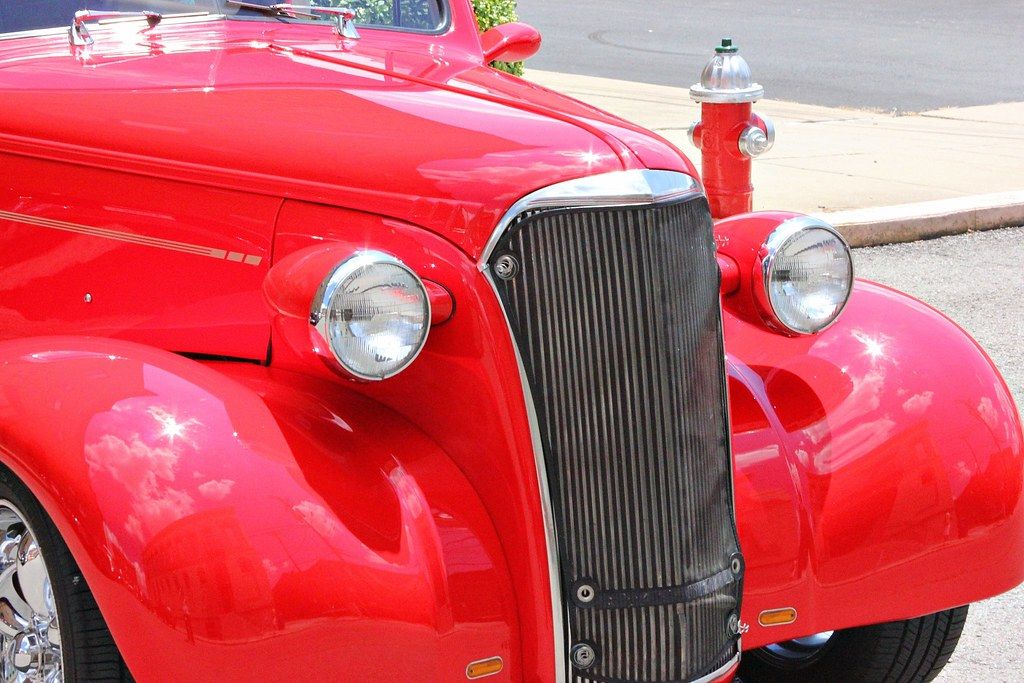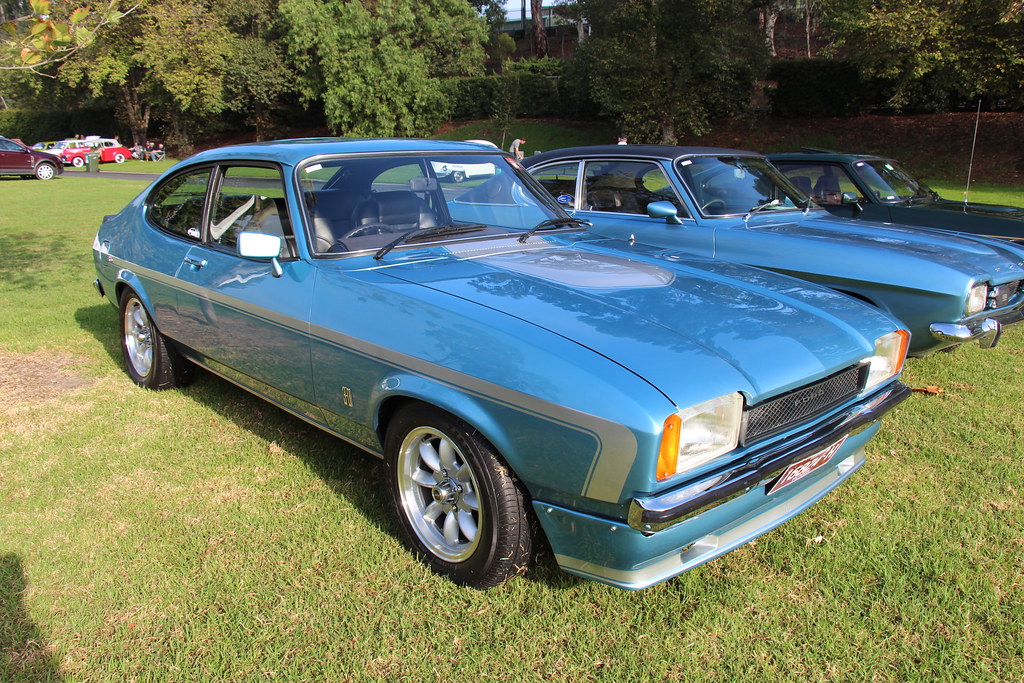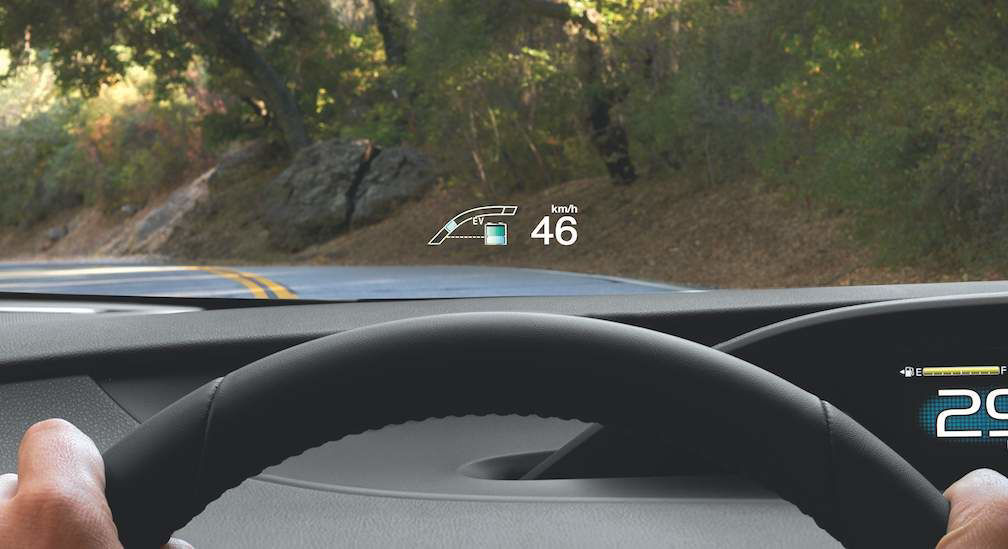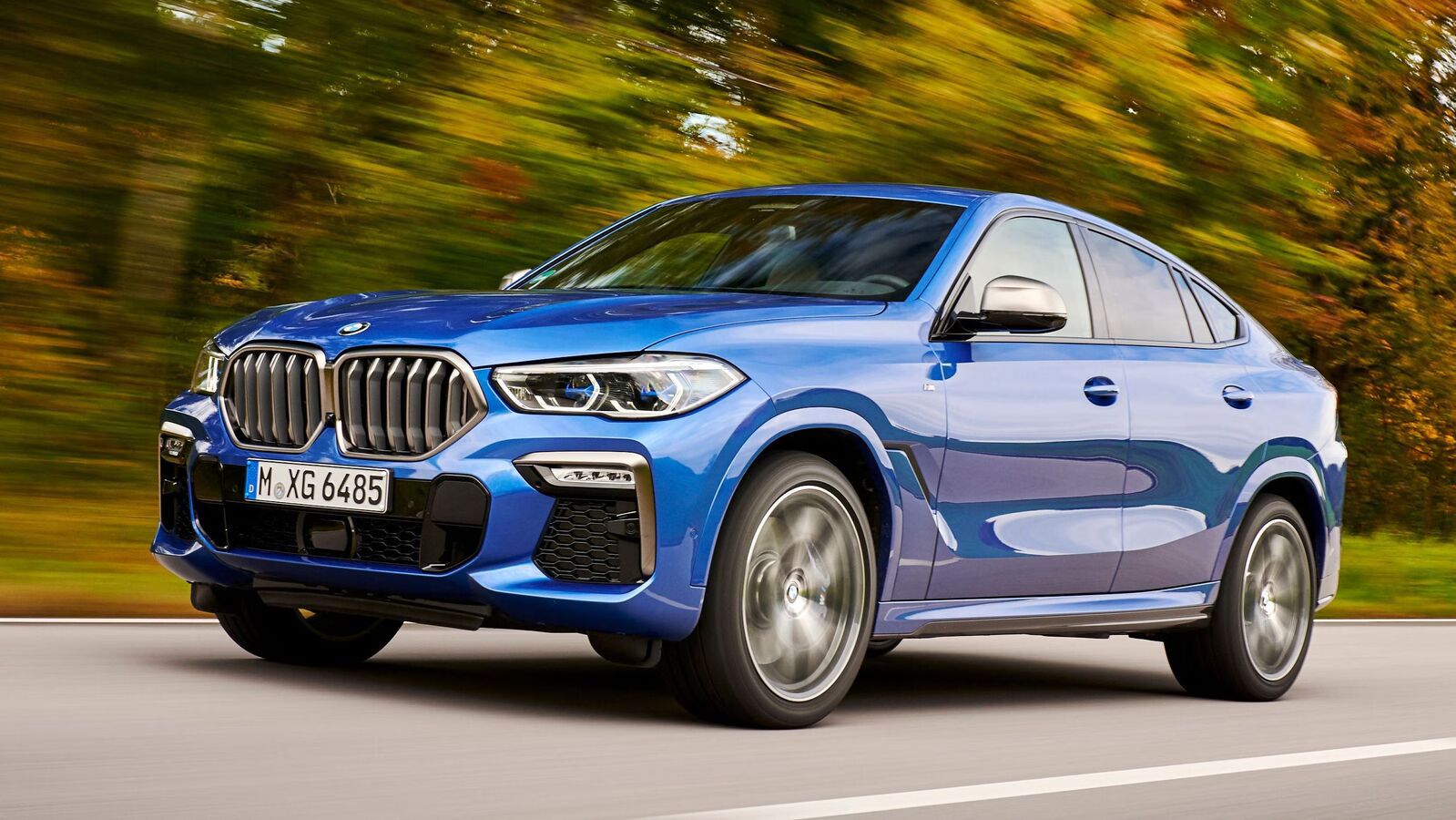
The automotive world is a relentless arena of innovation, where new models constantly emerge to captivate drivers and push the boundaries of engineering. Yet, for every groundbreaking debut, there’s an inevitable farewell. Production lines eventually halt, and even the most beloved vehicles transition from active manufacturing to the revered halls of automotive history. These cars, though no longer available new, leave an indelible mark on our collective memory and continue to shape enthusiast culture.
This article embarks on an in-depth journey to revisit some of these extraordinary machines. We aim to understand not just their specifications and design philosophies, but also their profound cultural and engineering impact during their time on the road. It’s a tribute to the ingenuity, passion, and vision that brought them to life, and a recognition of the significant legacies they forged before their production runs concluded.
Our exploration spans a diverse spectrum of automotive titans, encompassing European hypercars that shattered performance benchmarks, design masterpieces that redefined aesthetics, and engineering marvels that influenced generations. Each vehicle discussed here, from its initial concept to its final production model, tells a unique story of ambition, success, and eventually, a quiet departure, yet their influence continues to resonate strongly within the automotive community.
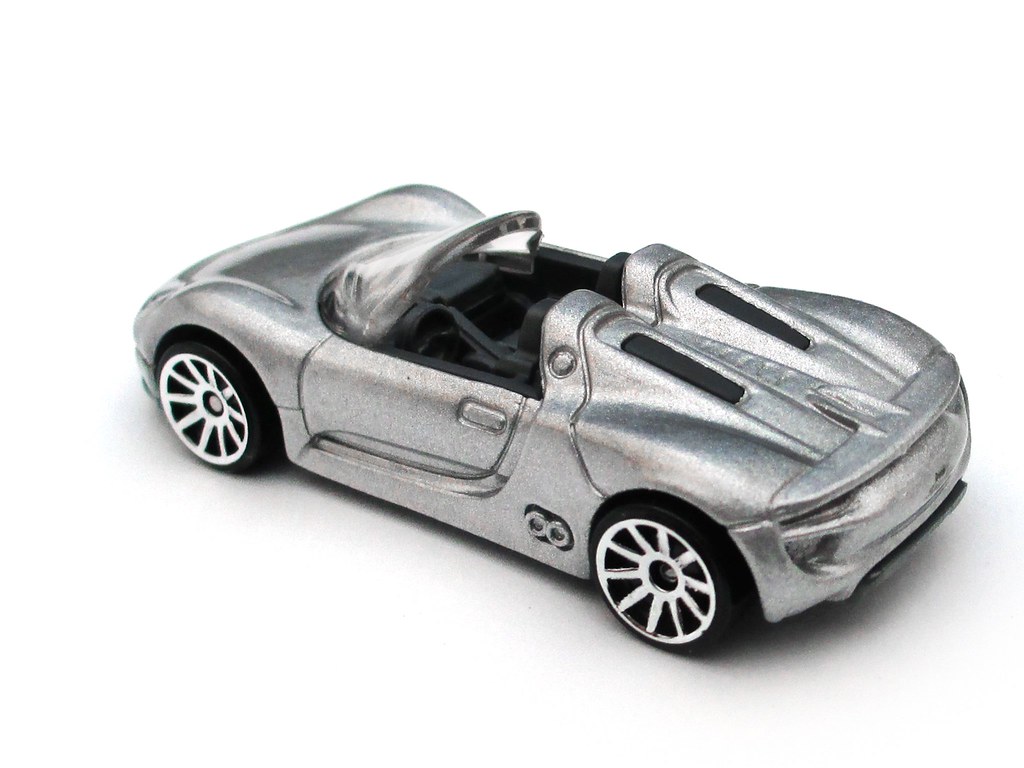
1. **918 Spyder, Porsche**Porsche’s entry into the exclusive hybrid hypercar segment, the 918 Spyder, was nothing short of a technological tour de force. Introduced in 2013 and built for a remarkably brief period until 2015, this machine wasn’t merely a statement of intent; it was a bold declaration of the future of high-performance motoring, proving that electrification could enhance, not detract from, an extreme driving experience.
The heart of the 918 Spyder was its revolutionary powertrain, a sophisticated marriage of a high-performance V8 engine with two electric motors. This intricate system worked in concert to produce staggering figures: an astounding 887 hp and 944 lb-ft of torque. It delivered power with an immediacy and ferocity that instantly established it as a benchmark in its class, redefining expectations for hybrid powertrains.
Such immense power translated into breathtaking on-road capabilities. The 918 Spyder could catapult from 0-60 mph in a blistering 2.6 seconds, and its top speed majestically topped 345 km/h. Crucially, it carved its name into performance lore by clocking a sub-7-minute lap on the unforgiving Nürburgring Nordschleife, a feat that solidified its status as a genuine record-breaker and a pioneer for hybrid hypercars.
Despite its short production window, the 918 Spyder’s legacy is profound. It not only pushed the boundaries of what was technically possible but also set a new standard for performance hybrids, inspiring future generations of electrified supercars. It remains a coveted collector’s item and a vivid reminder of Porsche’s unwavering commitment to innovation at the pinnacle of automotive engineering.
Car Model Information: 2019 Nissan Altima 2.5 SL
Name: Porsche 918 Spyder
Manufacturer: Porsche AG
Production: September 2013–June 2015
ModelYears: 2013–2015
Assembly: Stuttgart,Zuffenhausen
Predecessor: Porsche Carrera GT
Successor: Porsche Mission X
Class: Sports car
BodyStyle: Targa top,coupé
Layout: Mid-engine, four-wheel-drive layout
Doors: Car door#Conventional
Engine: cvt,Porsche V8 engine
Transmission: Dual clutch transmission#Porsche
Battery: lithium-ion battery
Motor: electric motor
Drivetrain: PHEV
Range: EPA
ElectricRange: cvt
Wheelbase: cvt
Length: cvt
Width: cvt
Height: cvt
Weight: cvt
Designer: Michael Mauer
Powerout: cvt
Categories: All articles containing potentially dated statements, Articles containing potentially dated statements from October 2014, Articles with short description, CS1 Dutch-language sources (nl), CS1 German-language sources (de)
Summary: The Porsche 918 Spyder is a high performance sports car manufactured by German marque Porsche. The 918 Spyder is a plug-in hybrid powered by a mid-mounted naturally aspirated 4.6 L (4,593 cc) V8 engine, developing 447 kW (608 PS; 599 hp) at 8,700 RPM, with two electric motors delivering an additional 210 kW (286 PS; 282 hp) for a combined output of 652 kW (875 hp) and 1,280 N⋅m (944 lbf⋅ft) of torque. The 918 Spyder’s 6.8 kWh lithium-ion battery pack delivers an all-electric range of 19 km (12 mi) under the US Environmental Protection Agency’s five-cycle tests.
Production began on 18 September 2013, with deliveries initially scheduled to begin in December 2013, and a starting price of ≈€781,000 (US$845,000 or £711,000). The 918 Spyder was sold out in December 2014 and production ended in June 2015.
The 918 Spyder was first shown as a concept at the 80th Geneva Motor Show in March 2010. On 28 July 2010, after 2,000 declarations of interest, the supervisory board of Porsche AG approved series development of the 918 Spyder. The production version was unveiled at the September 2013 Frankfurt Motor Show. Porsche also unveiled the RSR racing variant of the 918 at the 2011 North American International Auto Show, which combined hybrid technology first used in the 997 GT3 R Hybrid, with styling from the 918 Spyder. However, the 918 RSR did not make it to production. The 918 Spyder was the second plug-in hybrid car manufactured by Porsche, after the 2014 Panamera S E-Hybrid.
Set to be the replacement for the 918, the Porsche Mission X was presented first, at the preamble to the centenary of the 91st 24 Hours of Le Mans, in June of 2023 and to be produced in 2025.
Get more information about: Porsche 918 Spyder
Buying a high-performing used car >>>
Brand: Porsche Model: 918 Spyder
Price: $21,032 Mileage: 32,029 mi.
Read more about: Rev Up Your Engines! These 14 Stars Boast Jaw-Dropping, Priceless Classic Car Collections
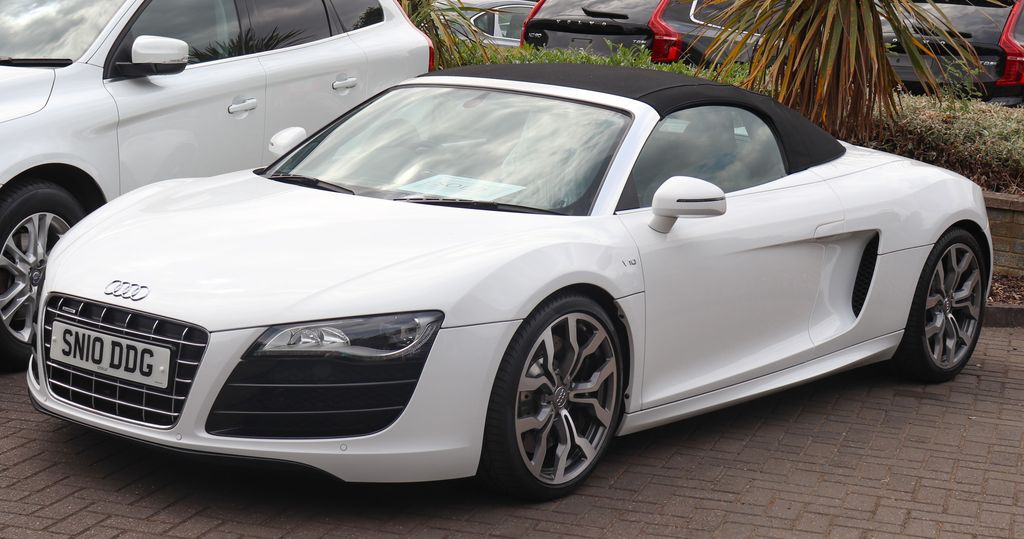
2. **R8, Audi**The Audi R8, a stunning mid-engine supercar, carved out a unique niche in the performance car world from its debut in 2007 until its recent discontinuation in 2024. What made the R8 particularly special was its remarkable ability to blend thrilling, supercar-level performance with a surprising degree of daily usability, a rare combination that endeared it to enthusiasts globally.
Its mechanical evolution was as captivating as its design. The R8 initially launched with a potent 4.2L V8 engine, delivering a visceral driving experience that was distinctly Audi Sport. Later iterations saw the introduction of a formidable V10 powerplant, an engine that famously shared its underpinnings with the legendary Lamborghini Gallardo, immediately elevating the R8’s supercar credentials and raw auditory drama.
Driving the R8 was always an event. Its balanced chassis, quattro all-wheel-drive system (in most variants), and precise steering offered an engaging and confidence-inspiring experience, whether on a winding road or a city street. The R8 was not just about straight-line speed; it was about the symphony of its engine, the precision of its handling, and the undeniable presence of its distinctive design.
After 16 years spanning two generations, the R8 has officially ceased production. However, its departure from showrooms only solidifies its status as a modern classic. It stands as a testament to Audi’s ambition to enter the supercar fray and succeed on its own terms, leaving behind a legacy of accessible exhilaration that will be cherished by enthusiasts for years to come.
Car Model Information: 2011 Audi R8 4.2 quattro
Caption: Audi R8 V10 Plus (Type 4S)
Manufacturer: Audi
Production: June 2006 – March 2024,(45,949 Units)
Class: Sports car
BodyStyle: coupé
Layout: Longitudinal engine,Mid-engine design,rear-wheel-drive
Sp: uk
ModelYears: 2007–2024
Categories: 2010s cars, 2020s cars, All articles with unsourced statements, Articles with short description, Articles with unsourced statements from March 2019
Summary: The Audi R8 is a mid-engine, 2-seater sports car, which uses Audi’s trademark quattro permanent all-wheel drive system. It was introduced by the German car manufacturer Audi AG in 2006. Production ended in the first quarter of 2024.
The car is exclusively designed, developed, and manufactured by Audi AG’s private subsidiary company manufacturing high performance automotive parts, Audi Sport GmbH (formerly quattro GmbH), and is based on the Lamborghini Gallardo and presently the Huracán platform. The fundamental construction of the R8 is based on the Audi Space Frame, and uses an aluminium monocoque which is built using space frame principles. The car is built by Audi Sport GmbH in a newly renovated factory at Audi’s ‘aluminium site’ at Neckarsulm in Germany. At the time it was introduced in 2006, the R8 became the first production car with full-LED headlamps.
Get more information about: Audi R8
Buying a high-performing used car >>>
Brand: Audi Model: R8
Price: $69,995 Mileage: 44,740 mi.
Read more about: Behind the Badges: Uncovering the Shared DNA of 10 Automotive Icons Built in the Same Factories
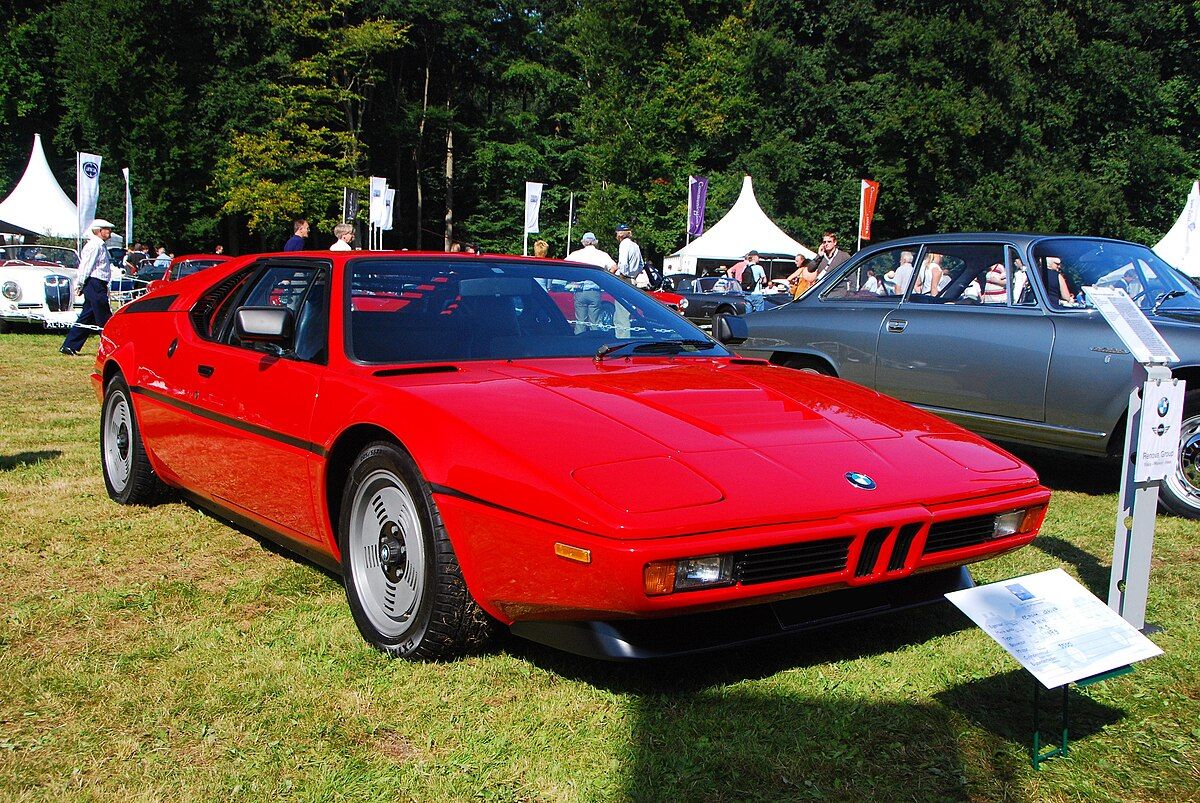
3. **M1, BMW**The BMW M1 holds a truly legendary status, not merely as a high-performance vehicle but as BMW’s pioneering foray into the exclusive realm of mid-engine supercars. Produced for a limited run between 1978 and 1981, it represented a radical departure from BMW’s traditional front-engine, rear-wheel-drive philosophy, conceived initially for a racing homologation purpose.
This iconic machine was a collaborative masterpiece, boasting sleek Giugiaro styling that gave it a distinct, wedge-shaped profile instantly recognizable as a product of its era. Beneath its striking exterior lay a formidable 3.5L inline-6 engine, an engineering marvel from BMW’s M division that provided robust power and a characteristically smooth, high-revving nature, perfectly suited to its supercar aspirations.
The M1’s rarity only adds to its mystique. With only around 450 examples ever made during its brief production period, it became an instant collector’s item upon release. This scarcity, combined with its unique history and performance pedigree, ensured its enduring appeal among discerning enthusiasts and collectors worldwide.
Its brief but impactful existence laid crucial groundwork for BMW’s M division, demonstrating their capability to compete at the very pinnacle of automotive performance and design. Today, the M1 is not just a car; it’s a cherished artifact, rightly celebrated as one of the most collectible BMWs ever produced, symbolizing a pivotal moment in the marque’s performance heritage.
Read more about: Unveiling the Real-World MPG Victors: A Deep Dive into Hybrids and EVs That Outperform Their EPA Estimates
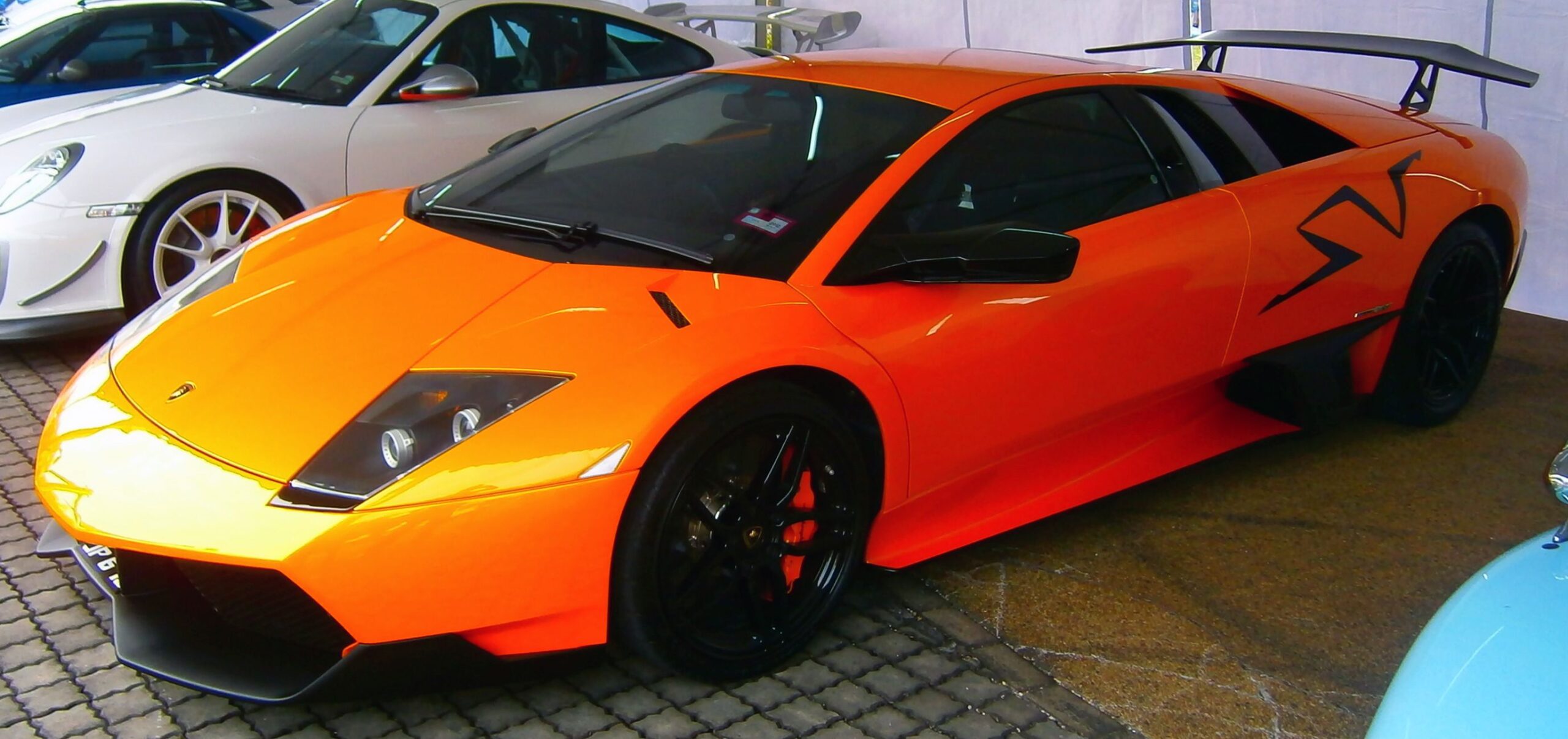
4. **Murciélago, Lamborghini**The Lamborghini Murciélago roared onto the supercar scene in 2001 and unequivocally ruled the world of exotic automobiles for nearly a decade, with its production continuing until 2010. As the flagship model under Audi ownership, it masterfully blended Italian passion with German engineering discipline, cementing Lamborghini’s reputation for unapologetic, engine-forward design and raw performance.
At the heart of the Murciélago’s beastly appeal was its majestic V12 engine, initially a 6.2L unit, later expanding to a more formidable 6.5L. This powerplant was more than just an engine; it was a symphony of power, delivering a visceral and intoxicating blend of sound and acceleration that defined the quintessential Lamborghini driving experience. It was about pure, unadulterated force.
Visually, the Murciélago was an undeniable spectacle. Its dramatic, aggressive styling was accentuated by its signature scissor doors, a design cue synonymous with Lamborghini’s most extreme vehicles. Every line, every vent, and every curve was crafted to convey aggression, speed, and an almost sculptural beauty, making it an unmistakable presence on any road.
The Murciélago’s significant tenure set the tone for Lamborghini’s bold, engine-forward design direction, influencing subsequent V12 models and reinforcing the brand’s identity as a purveyor of ultimate supercars. It remains a powerful icon, embodying an era of outrageous performance and flamboyant style that continues to captivate enthusiasts globally.
Read more about: Remember When These European Legends Ruled the Roads? 15 Iconic Car Models That Defined an Era But Are Now Gone
5. **Dino Coupe, Ferrari**The Ferrari Dino Coupe occupies a truly unique and historically significant position within Maranello’s storied lineage. Produced between 1967 and 1973, it holds the distinction of being Ferrari’s very first mid-engine road car. This innovative layout marked a pivotal shift in the company’s approach to performance vehicles, influencing countless models that would follow in its wake.
Adding a deeply poignant layer to its identity, the Dino was named after Enzo Ferrari’s late son, Alfredo “Dino” Ferrari, who had championed the development of a V6 engine before his untimely passing. This emotional connection imbued the car with a character that transcended mere mechanics, symbolizing a personal tribute from the legendary founder.
Underneath its breathtakingly elegant Pininfarina-designed body, the Dino featured a 2.0L or 2.4L V6 engine. While it initially drew some controversy for not being a V12-powered Ferrari, its light weight, nimble handling, and exquisite balance delivered a unique and highly engaging driving experience. Its beauty was undeniable, a flowing sculpture of automotive art.
Despite its initial positioning as a more ‘accessible’ Ferrari, the Dino’s combination of iconic beauty and finely-tuned performance quickly elevated its status. Today, it is revered as a “collector’s dream,” a testament to its timeless design and the enduring appeal of its sophisticated engineering, proving that a Ferrari badge isn’t solely defined by the number of cylinders.
Car Model Information: 2021 Cadillac Escalade Premium Luxury
Name: Dino 206 GT,Dino 246 GT and GTS
Caption: Dino 246 GT
Manufacturer: Ferrari
Designer: Pininfarina,Aldo Brovarone,Leonardo Fioravanti (engineer)
Class: Sports car
Layout: Transverse engine,Rear mid-engine, rear-wheel-drive layout
Engine: Ferrari Dino engine
Successor: Ferrari GT4
Sp: uk
Categories: All articles with unsourced statements, Articles with short description, Articles with unsourced statements from September 2018, Cars introduced in 1968, Cars introduced in 1969
Summary: The Dino 206 GT, 246 GT and 246 GTS are V6 mid-engined sports cars produced by Ferrari and sold under the Dino marque between 1967 and 1974.
The Dino 246 was the first automobile manufactured by Ferrari in high numbers. It is lauded by many for its intrinsic driving qualities and groundbreaking design. In 2004, Sports Car International placed the car at number six on its list of Top Sports Cars of the 1970s. Motor Trend Classic placed the 206/246 at number seven in their list of the 10 “Greatest Ferraris of all time”.
Get more information about: Dino 206 GT and 246 GT
Buying a high-performing used car >>>
Brand: Ferrari Model: Dino Coupe
Price: $62,985 Mileage: 40,629 mi.
Read more about: Unveiling the Unseen: Why Ferrari’s One-Of-A-Kind Masterpieces Reside in the Enzo Ferrari Museum
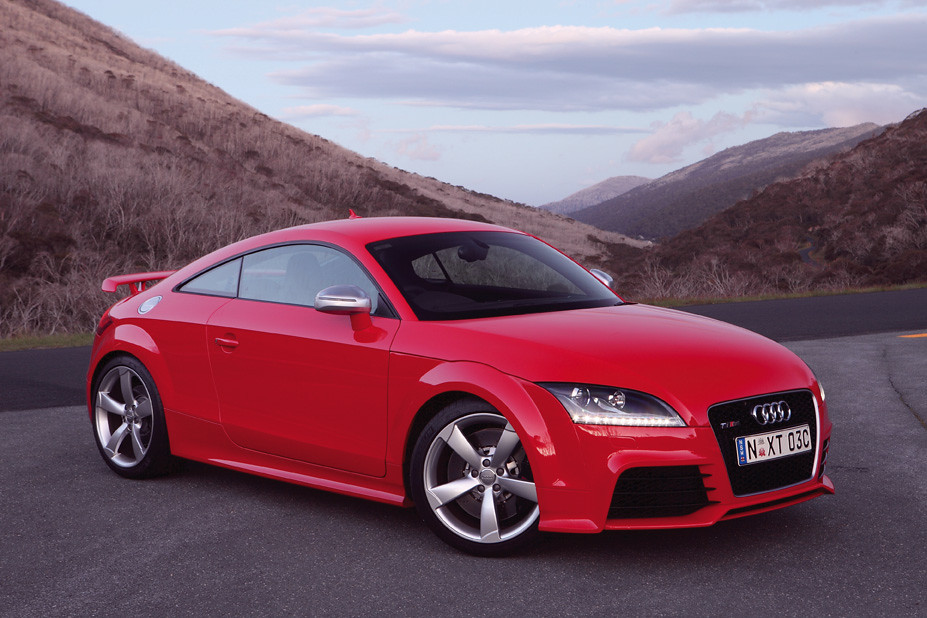
6. **Audi TT, Audi**Few sports cars have managed to blend distinctive design with accessible performance as successfully and enduringly as the Audi TT. Debuting in 1998, this iconic vehicle enjoyed a remarkable 25-year production run before its final curtain call in 2023. Its arrival was a design statement, instantly recognizable and widely celebrated for its Bauhaus-inspired aesthetic.
The TT was renowned for its instantly recognizable “bold design,” which remained remarkably consistent and fresh across its generations. Beyond its striking looks, it offered “responsive handling” and a lively driving experience that made it a favorite among enthusiasts. Early versions, particularly those equipped with the charismatic VR6 engine, were especially lauded for their character and performance.
As the TT said its final goodbyes, Audi marked the occasion with special editions. Buyers in the UK were treated to a “Final Edition” model for 2023, while in the US, the “RS Heritage Edition,” introduced the previous year, served as the last of its kind, honoring the TT’s legacy and its impact on the sports car segment.
Even with its discontinuation, the story of the Audi TT might not be entirely over. There is widespread “hope for an electric revival” among fans, a testament to the model’s enduring appeal and the potential for its distinctive character to evolve into the electrified future. The TT’s legacy as a design icon and a driver’s car is firmly cemented.
Car Model Information: 2019 Audi TT RS 2.5T
Name: Audi TT
Caption: 2019 Audi TT Sport 40 TFSi
Manufacturer: Audi AG
Production: October 1998 – November 2023
ModelYears: 1999–2023
Assembly: Győr
Class: Sports car
BodyStyle: coupé
Layout: unbulleted list
Platform: Volkswagen Group A platform,Volkswagen Group MQB platform
Sp: uk
Categories: 2+2 coupés, 2000s cars, 2010s cars, 2020s cars, All-wheel-drive vehicles
Summary: The Audi TT is a production front-engine, 2-door, 2+2 sports coupé and roadster, manufactured and marketed by Audi from 1998 to 2023 across three generations.
For each of its three generations, the TT has been based on consecutive generations of Volkswagen’s “Group A” platforms, starting with its “PQ34” fourth generation. The TT shares powertrain and suspension layouts with its platform mates, including the Audi A3, like a transversely mounted front-engine, powering front-wheel drive or four-wheel drive, and fully independent suspension using MacPherson struts in front.
The TT’s first two generations were assembled by Audi’s Hungarian subsidiary, one of the world’s largest engine manufacturing plants, using bodyshells manufactured and painted at Audi’s Ingolstadt plant and parts made entirely by the Hungarian factory for the third generation.
The last of the 662,762 Audi TTs was manufactured in November 2023.
Get more information about: Audi TT
Buying a high-performing used car >>>
Brand: Audi Model: TT
Price: $59,988 Mileage: 27,442 mi.
Read more about: Beyond Nostalgia: 12 Enduring Reasons Why Classic Cars Still Outshine Modern Vehicles for True Enthusiasts
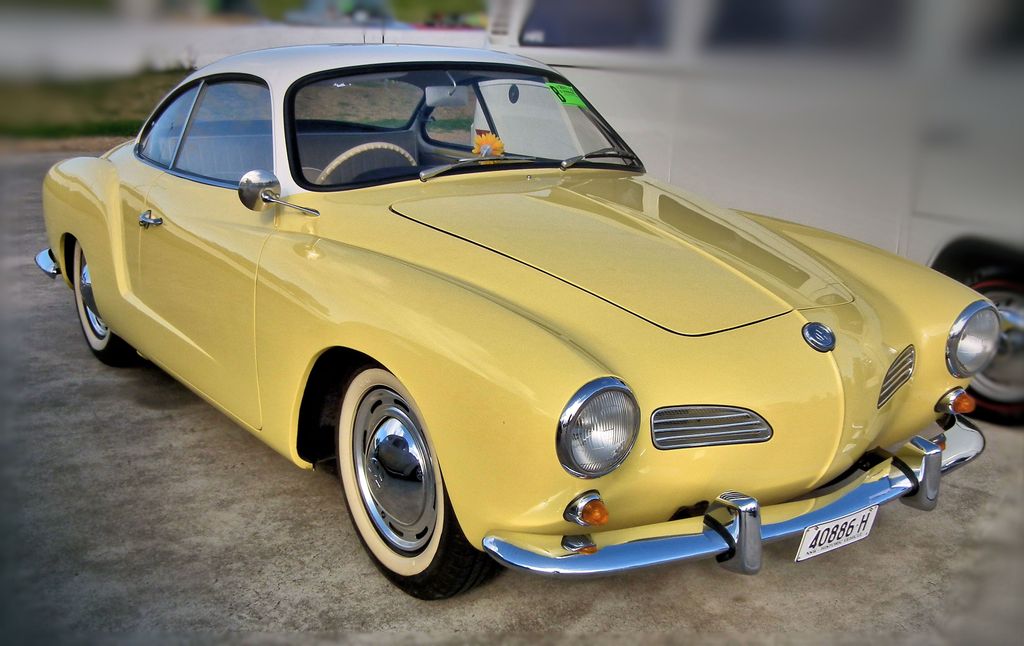
7. **Karmann Ghia, Volkswagen**The Volkswagen Karmann Ghia stands as a testament to the power of beautiful design transcending humble mechanical origins. Built over an impressively long span from 1955 to 1974, this elegant coupe and convertible combined accessible engineering with a truly sophisticated aesthetic, creating a car that defied its mass-market underpinnings and became an instant classic.
The secret to the Karmann Ghia’s enduring appeal lay in its unique collaboration. It masterfully combined “VW’s reliable mechanics” – primarily sourced from the ubiquitous Beetle – with “elegant Italian styling” penned by Carrozzeria Ghia and bodied by the German coachbuilder Karmann. This fusion resulted in a car that looked far more expensive and exclusive than its price tag suggested.
Its most defining characteristic was undoubtedly its timeless design. “Its curves made it timeless,” flowing seamlessly from front to rear with an understated grace that captivated onlookers. The absence of sharp angles and superfluous adornments allowed its pure, organic form to shine, establishing it as “one of the most beautiful cars of its era,” a sentiment that remains true today.
The Karmann Ghia continues to be cherished by enthusiasts and collectors alike, proving that a car doesn’t require immense horsepower or cutting-edge technology to achieve legendary status. Its charm lies in its harmonious blend of practicality and undeniable style, a perfect example of how thoughtful design can create an automotive icon that transcends generations and continues to inspire.
## Chapter 2: Rally Legends, Post-War Icons, and Modern Enthusiast Machines: Farewell to More Automotive Greats
Having explored some of Europe’s most influential performance and design maestros, our journey continues into a diverse landscape of automotive greats whose impact spanned from rallying dominance to post-war recovery, and from everyday utility to executive aspirations. These machines, though no longer rolling off production lines, each tell a compelling story of engineering ambition, cultural significance, and the evolving tastes of a global motoring public. They represent a cross-section of automotive history, reminding us that greatness can manifest in many forms, from raw power to humble practicality.
Our next collection of discontinued classics further solidifies the notion that every car, regardless of its market position or production volume, has a unique narrative. From the nimble urbanites that democratized personal transport to the rally monsters that rewrote performance rulebooks, these vehicles underscore the rich tapestry of the automotive industry. Join us as we delve into the stories of these additional twelve remarkable cars, celebrating their enduring legacies and the reasons why they continue to captivate enthusiasts long after their final models were built.
Car Model Information: 2021 Cadillac Escalade Premium Luxury
Name: Volkswagen Types 14, 34, and 145
Caption: 1962 Type 14 VW Karmann Ghia
Manufacturer: Volkswagen
Production: Germany,Type 14: 1955–1974,Type 34: 1961/1962–1969,
445,238 total units built:,Coupé: 364,401 (Type 14 and 34),Cabriolet: 80,837 (all Type 14)
Brazil,Type 14: 1962–1971,TC (Touring Coupé): 1972–1975,
41,689 total units built:,Coupé: 23,393,Cabriolet: 177,TC (Touring Coupé): 18,119
Related: Volkswagen Beetle,Volkswagen Type 3,Puma (car manufacturer)#Volkswagen era
Class: Sports car
BodyStyle: convertible (car)
Engine: flat-4
Designer: Carrozzeria Ghia
Layout: RR layout
Successor: Porsche 914,Volkswagen Scirocco,Volkswagen SP2
Assembly: Osnabrück
Categories: 1960s cars, 1970s cars, All articles with unsourced statements, Articles with short description, Articles with unsourced statements from May 2023
Summary: The Volkswagen Karmann Ghia are a family of three overlapping sports car models produced by Volkswagen, marketed in 2+2 coupe (1955–1975) and 2+2 convertible (1957–1975) body styles, though German production ended one year before that in Brazil. Internally designated the Type 14 (1955–1975), the Type 34 (1962–1969), and the Type 145 TC (1972–1975; Brazil), the Karmann Ghia cars combined the floorpans and mechanicals of the Type 1 / Beetle or Type 3 ‘ponton’ models with styling by Italy’s Carrozzeria Ghia, and hand-built bodywork by German coachbuilding house Karmann.
The 1955 Type 14 Karmann Ghia was just the second Volkswagen passenger car ever produced, after the Beetle, and launched six years before the Type 3 notchbacks, fastbacks and Variants (squarebacks). They were faster and more expensive than the Beetle, but very cramped in the back, despite their wider, postwar and nearly slabsided body design. Two years later, in 1957, a convertible was added.
In 1961, the Karmann Ghia briefly lost its title of fastest Volkswagen, upon launch of the more powerful 1500cc Type 3 models, but later that year, Volkswagen, Ghia, and Karmann presented an all new Karmann Ghia – Type 34, using the Type 3’s floorpan and 1500cc powertrain. Made from 1962 to 1969, this had both new, more modern, angular and roomier bodywork; and a new, more luxurious interior, making it substantially more expensive than all other VW passenger cars. Additionally, the Type 34 was one of the world’s first cars with a power operated steel sunroof option. The Type 34 Karmann Ghia thus became VW’s range-topper again – costing up to twice the price of a Beetle – while the cheaper Type 14 remained in production. Only the latter offered a convertible.
Failure to offer the Type 34 in the United States – the Karmann Ghia’s most important market – combined with high pricing elsewhere likely contributed to limited sales, and after the type 14 also received the 1500cc engine in 1967, production of Type 34s was ended during 1969. Volkswagen of Brazil nevertheless looked for an alternative in its market segment, and so Carrozzeria Ghia was again commissioned, to design a third Karmann Ghia model, for the South American market, the Karmann Ghia TC (Touring Coupé), made in Brazil from 1972–1975. The result was a stylish, rakish fastback that offered good interior space for a 2+2 car.
For its final model year, the vestigial rear seat in the Type 14 was discontinued for North American models, as it lacked provisions for seat belts; all Karmann Ghias for 1974 were marketed strictly as two-seaters.
More than 445,000 Karmann Ghias were produced in Germany over the car’s production life, not including the Type 34 variant. Volkswagen do Brasil (Volkswagen Brasil) produced 41,600 Type 34s in Brazil for South America between 1962 and 1975.
Long noted for its exterior styling, the Karmann Ghia was designed with input from numerous individuals at Carrozzeria Ghia and was strongly influenced by Virgil Exner’s work, though all of its designers passed without a definitive individual styling attribution.
Get more information about: Volkswagen Karmann Ghia
Buying a high-performing used car >>>
Brand: Volkswagen Model: Karmann Ghia
Price: $62,985 Mileage: 40,629 mi.
Read more about: Inside the Urban Outlaw’s Garage: A Hollywood Legend’s Secret Porsche Collection Revealed
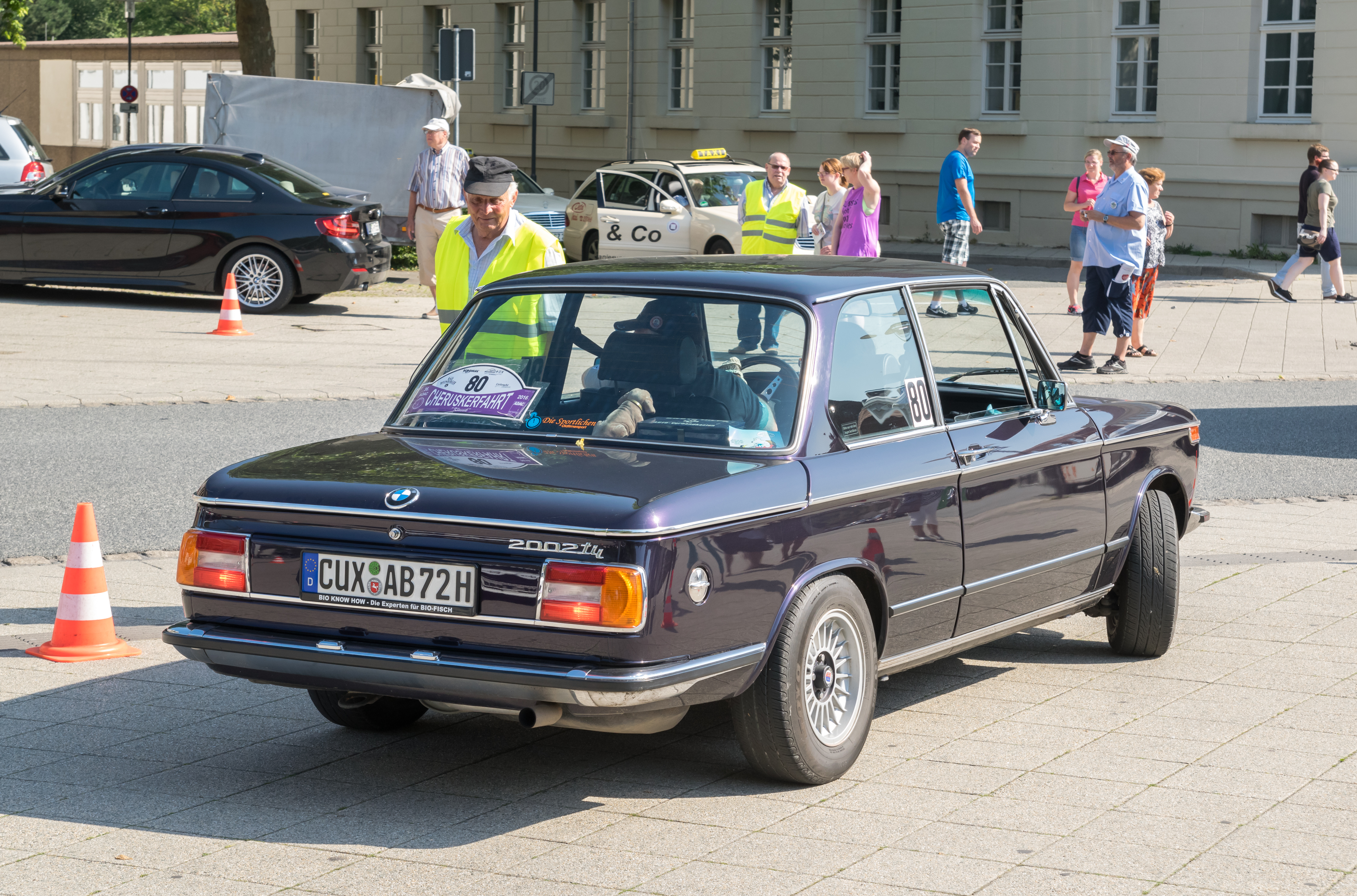
8. **2002 (tii), BMW**Between 1968 and 1975, the BMW 2002 emerged as a pivotal model that was instrumental in forging BMW’s now-legendary reputation for producing sporty, driver-focused vehicles. This lightweight sedan might not have boasted the exotic flair of a supercar, but its inherent balance and engaging dynamics quickly made it a darling of the motoring press and an instant favorite among enthusiasts. It was a clear statement that BMW was serious about performance, even in a more accessible package.
At its core, the 2002’s appeal was rooted in its remarkably straightforward yet highly effective engineering. Its nimble handling was a revelation, allowing drivers to extract maximum enjoyment from every twist and turn, while its efficient inline-4 engine provided ample power with a distinctive character. This combination of agility and responsive power delivery created a truly immersive driving experience, setting a benchmark for compact sports sedans that few could match.
Indeed, the 2002 wasn’t just a car; it was a cultural touchstone that solidified BMW’s identity as a purveyor of ‘the ultimate driving machine.’ Its influence stretched for decades, inspiring subsequent generations of BMW models and leaving an indelible mark on the brand’s performance DNA. Even today, the spirit of the 2002 is palpable in many modern BMWs, a testament to its foundational role in shaping the marque’s philosophy.
Car Model Information: 1971 BMW 2002
Name: BMW 02 Series
Caption: BMW 1600-2
Production: 1966–1977,837,038 units
Assembly: Munich
Class: Compact executive car
BodyStyle: 2-door coupé , 2-door convertible , 3-door hatchback
Layout: Front-engine, rear-wheel-drive layout
Engine: ubl
Wheelbase: cvt
Length: cvt
Width: cvt
Height: cvt
Weight: cvt
Transmission: 4-speed manual , 5-speed manual ,3-speed automatic
Successor: BMW 3 Series (E21)
Designer: Giovanni Michelotti
Manufacturer: BMW
Categories: 1970s cars, Articles with short description, BMW vehicles, CS1 German-language sources (de), CS1 Italian-language sources (it)
Summary: The BMW 02 Series is a range of sporty compact executive cars produced by German automaker BMW between 1966 and 1977, based on a shortened version of the New Class Sedans.
The first 02 Series produced was the 1600-2 (later renamed 1602) in 1966. In 1975, the 02 Series was replaced by the E21 3 Series (except for the 1502 model, which continued until 1977).
Get more information about: BMW 02 Series
Buying a high-performing used car >>>
Brand: BMW Model: 2002
Price: $45,550 Mileage: 5,001 mi.
Read more about: Remember When These European Legends Ruled the Roads? 15 Iconic Car Models That Defined an Era But Are Now Gone

9. **Isetta, BMW**Shifting gears dramatically, we encounter the BMW Isetta, a truly unique and historically vital vehicle that played a crucial role in rescuing BMW from financial turmoil in the aftermath of World War II. Launched in the mid-1950s, this quirky ‘bubble-car’ was far more than just a mode of transport; it was a symbol of resourcefulness and ingenuity, providing much-needed mobility during a period of economic recovery and scarcity in Europe.
What truly set the Isetta apart was its utterly distinctive and somewhat whimsical micro-car design. With its iconic ‘single-front door,’ which allowed for easy access directly from the curb, it presented a departure from conventional automotive layouts. This innovative entry method, coupled with its compact footprint, made it perfectly suited for congested post-war European cities, offering unparalleled maneuverability and parking ease.
Beneath its charming exterior, the Isetta featured a surprisingly nimble 0.3L engine, a tiny yet effective powerplant that provided just enough grunt for urban commuting and short intercity trips. Its modest size and efficient operation quickly endeared it to a broad segment of the population, transforming it into an “instant post-war icon” and a pragmatic solution for millions seeking personal transportation without the cost or complexity of a full-sized automobile.
The Isetta’s legacy extends beyond its functional role; it showcased BMW’s adaptability and willingness to innovate in challenging times. It became a beloved symbol of an era, demonstrating that even a small, unconventional vehicle could achieve monumental significance and secure the future of a prestigious automotive brand. Today, it stands as a charming reminder of automotive history and BMW’s incredible comeback story.
Car Model Information: 1956 BMW Isetta
Name: Isetta
Production: Iso Isetta (1953–56),BMW Isetta (1955–62),VELAM Isetta (1955–58),Romi-Isetta (1956–61)
Manufacturer: Iso Autoveicoli,BMW,VELAM,Romi
Layout: MR layout
BodyStyle: Cabriolet,Van,Pick-up
Categories: All articles with dead external links, Articles with dead external links from February 2018, Articles with permanently dead external links, Articles with short description, BMW vehicle series
Summary: The Isetta is an Italian-designed microcar initially manufactured in 1953 by the Italian firm Iso SpA, and subsequently built under license in a number of different countries, including Argentina, Spain, Belgium, France, Brazil, Germany, and the United Kingdom. The name Isetta is the Italian diminutive form of Iso, meaning “little Iso”. Because of its egg shape and bubble-like windows, it became known as a bubble car, a name also given to other similar vehicles.
In 1955, the BMW Isetta became the world’s first mass-production car to achieve a fuel consumption of 3 L/100 km (94 mpg‑imp; 78 mpg‑US). It was the top-selling single-cylinder car in the world, with 161,728 units sold.
Get more information about: Isetta
Buying a high-performing used car >>>
Brand: BMW Model: Isetta
Price: $30,000 Mileage: 16,889 mi.
Read more about: Remember When These European Legends Ruled the Roads? 15 Iconic Car Models That Defined an Era But Are Now Gone
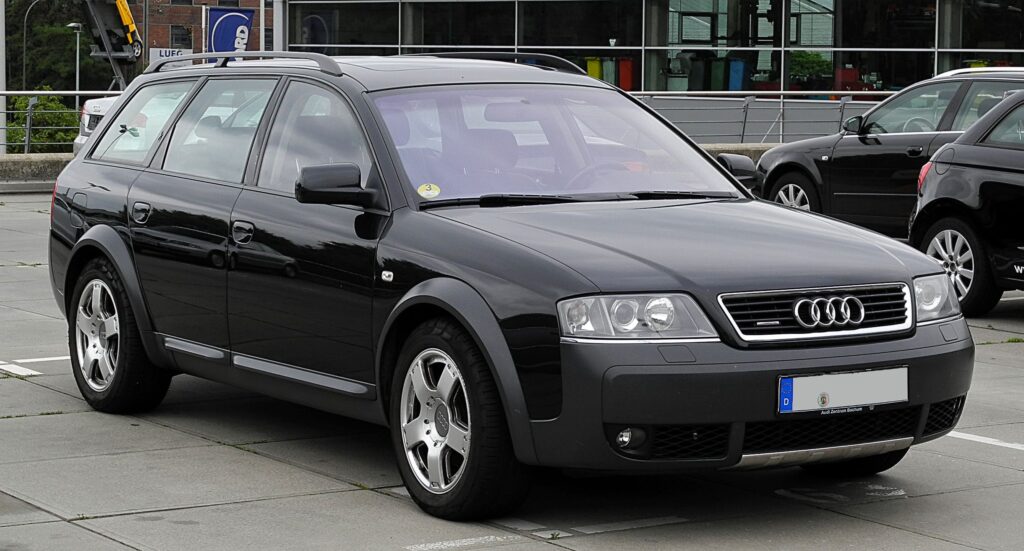
10. **Quattro, Audi**Few cars have revolutionized a motorsport discipline quite like the Audi Quattro. Introduced in 1980 and phased out by the 1990s, this groundbreaking machine didn’t just compete in rally racing; it utterly transformed it. The Quattro brought all-wheel-drive technology to the forefront of competitive rallying, forever changing the dynamics of the sport and establishing a new paradigm for performance on diverse terrains.
The secret to the Quattro’s unparalleled success lay in its innovative all-wheel-drive system, a technology previously considered too heavy or complex for competitive use. Audi’s engineers, however, masterfully integrated it, allowing the Quattro to harness incredible traction and stability, especially on loose surfaces like gravel, snow, and mud. This technological leap provided an undeniable advantage, enabling drivers to push limits previously unimaginable.
Its dominance in the World Rally Championship was absolute, with the Quattro securing multiple victories and championships that cemented its legendary status. The sight and sound of the turbocharged, five-cylinder Quattro, spitting flames and tearing through rally stages, became iconic, capturing the imaginations of fans worldwide. It wasn’t just winning; it was redefining what was possible in rallying, inspiring awe and fear in its competitors.
The rally-born legacy of the Audi Quattro continues to resonate profoundly in modern all-wheel-drive performance cars. Its influence is evident in the sophisticated AWD systems found in countless contemporary sports cars and luxury vehicles, demonstrating how a singular innovation in motorsport can trickle down to enhance the safety, performance, and driving experience of everyday automobiles. The Quattro remains a powerful symbol of Audi’s pioneering spirit and engineering prowess.
Car Model Information: 2020 Audi SQ5 3.0T Premium Plus
Name: Audi Quattro B2 (85)
Manufacturer: Audi
Aka: Ur-Quattro
Production: 1980–1991,11,452 produced
Assembly: Ingolstadt
Designer: Jörg Bensinger,Walter Treser,Ferdinand Piëch,Franz Tengler (transmission),Martin Smith (designer)
Class: Mid-size car,rallying
BodyStyle: coupé
Platform: Volkswagen B platform#B2
Related: Audi 80#B2
Layout: longitudinal engine,Front-engine, four-wheel-drive layout,all-wheel drive
Engine: SOHC,2.2 L SOHC 10v I5 (turbo) (1987–1989),DOHC
Transmission: manual transmission
Wheelbase: 2524 mm
Abbr: on
Length: 4404 mm
Width: 1722 mm
Height: 1346 mm
Weight: 1290 kg
Sp: uk
Predecessor: Audi 100 Coupé S
Successor: Audi S2
Categories: 1990s cars, All-wheel-drive vehicles, Articles with hAudio microformats, Articles with short description, Audi racing cars
Summary: The Audi Quattro is a road and rally car, produced by the German automobile manufacturer Audi, part of the Volkswagen Group. It was first shown at the 1980 Geneva Motor Show on 3 March. Production continued through 1991.
Get more information about: Audi Quattro
Buying a high-performing used car >>>
Brand: Audi Model: Quattro
Price: $27,563 Mileage: 63,193 mi.
Read more about: Inside Donald Trump’s Lavish Car Collection: From Classic Rolls-Royces to Supercars
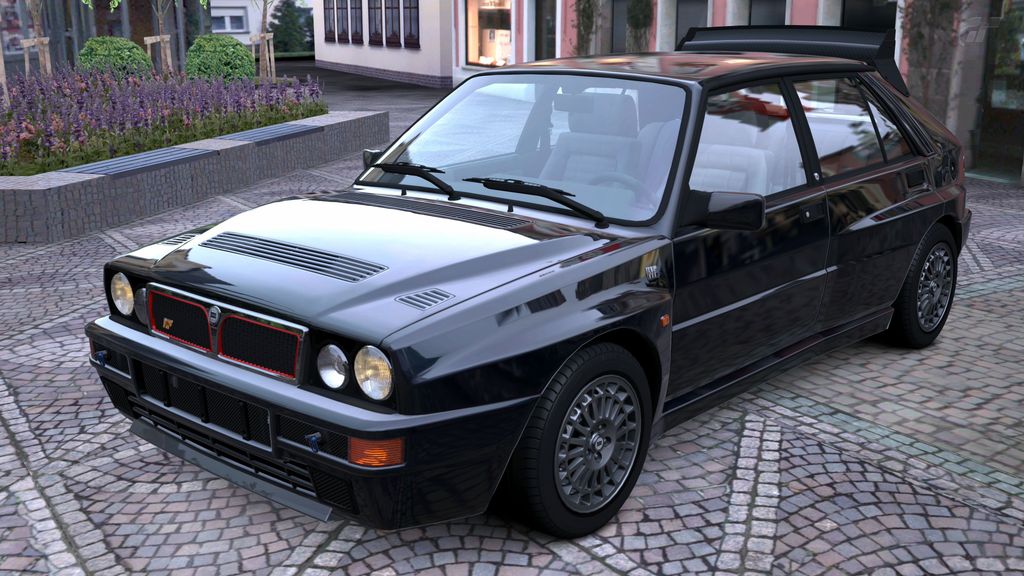
11. **Delta Integrale, Lancia**Following in the tire tracks of rally greatness, the Lancia Delta Integrale stands as another towering figure in motorsport history, particularly during the “golden era of Group A competition.” Produced from 1986 to 1994, the Integrale was a rally homologation special that achieved legendary status by utterly dominating rally stages with a ferocity and consistency that few cars have ever matched. It was a purpose-built machine designed for one thing: victory.
At the heart of the Delta Integrale’s formidable capabilities was its potent turbocharged engine, delivering explosive power that could propel the compact hatchback with astonishing speed. Coupled with its sophisticated all-wheel-drive system, which meticulously distributed power to maximize traction, the Integrale could tackle the most challenging rally conditions with unwavering confidence and blistering pace, making it a force to be reckoned with on any surface.
Lancia’s commitment to continuous development meant the Integrale evolved through several iterations, each one more refined and capable than the last. This relentless pursuit of performance led to an unprecedented six consecutive World Rally Championship constructor titles, an achievement that cemented its place in the annals of motorsport and made it the envy of every competing manufacturer. It truly shaped an era of intense competition and technological advancement.
Unsurprisingly, the Lancia Delta Integrale remains “legendary among enthusiasts” today. Its raw performance, iconic styling, and unparalleled rally pedigree have ensured its status as a highly coveted collector’s item and a enduring symbol of Lancia’s engineering brilliance. For many, it represents the pinnacle of rally car design and a golden age where homologation specials brought incredible performance directly to the road.
Car Model Information: 2021 Cadillac Escalade Premium Luxury
Name: Lancia Delta
Caption: Lancia Delta LX 1.3 (first generation, 1986–91 model)
Manufacturer: Fiat Auto
Production: 1979–1999,2008–2014
Class: Small family car
BodyStyle: Hatchback
Layout: Transverse engine,Front-engine, front-wheel-drive layout
Categories: 1980s cars, 1990s cars, 2000s cars, 2010s cars, All articles with dead external links
Summary: The Lancia Delta (stylized Lancia δ) is a small family car produced by Italian automobile manufacturer Lancia in three generations. The first generation (1979–1994) debuted at the 1979 Frankfurt Motor Show, the second generation (1993-1999) debuted at the 1993 Geneva Motor Show, and the third generation (2008–2014) debuted at 2008 Geneva Motor Show.
The first generation Delta dominated the World Rally Championship during the late 1980s and early 1990s. The homologation requirements of Group A regulations meant marketing road-going versions of these competition cars — the Lancia Delta HF 4WD and HF Integrale. A total of 44,296 Integrales were produced. Total production number of the Delta first generation was 478,645 cars.
Get more information about: Lancia Delta
Buying a high-performing used car >>>
Brand: Lancia Model: Delta Integrale
Price: $62,985 Mileage: 40,629 mi.
Read more about: Remember When These European Legends Ruled the Roads? 15 Iconic Car Models That Defined an Era But Are Now Gone
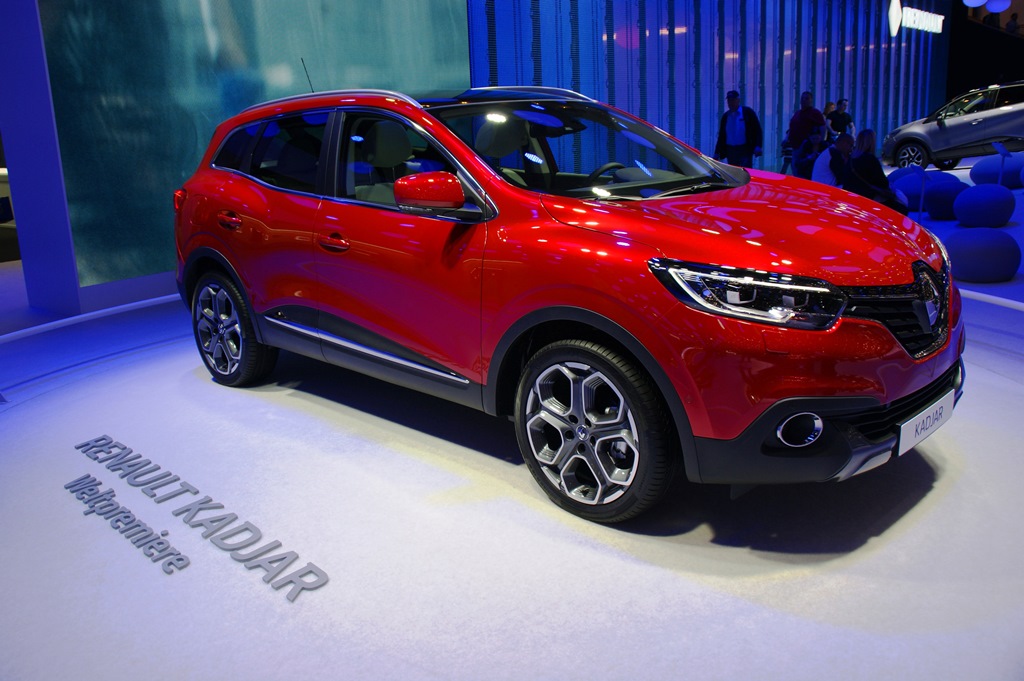
12. **Renault 4, Renault**Steering away from the high-octane world of rallying, we discover the Renault 4, a vehicle that, despite its humble origins, exerted an equally profound impact on European society. Produced from 1968 until the mid-1980s, the Renault 4 holds the significant distinction of being Europe’s very first mass-market hatchback. This innovative design provided unparalleled practicality and versatility, making it an instant hit with families and individuals alike.
The enduring appeal of the Renault 4 stemmed from a simple yet brilliant design philosophy that prioritized “utility, affordability, and simplicity.” Its ingenious hatchback configuration offered cavernous cargo space and easy loading, a revolutionary feature at the time. Coupled with its robust and easy-to-maintain mechanicals, the Renault 4 became an embodiment of pragmatic design, perfectly suited for the diverse demands of European life.
These qualities quickly established the Renault 4 as “a staple across Europe,” from the bustling streets of Paris to the winding country roads of rural France, and far beyond. It was the quintessential ‘people’s car,’ capable of carrying families, farm produce, or adventurers with equal ease. Its unpretentious charm and steadfast reliability made it an indispensable part of everyday life, becoming a familiar and trusted sight in virtually every European nation.
More than just a car, the Renault 4 evolved into “a symbol of mobile freedom for decades.” It democratized personal transportation, allowing generations to experience the joy and independence of owning a vehicle. Its legacy is one of practicality, accessibility, and an undeniable charm that continues to resonate with collectors and enthusiasts who appreciate its pioneering spirit and its role in shaping modern automotive design.
Car Model Information: 2019 Nissan Altima 2.5 SL
Name: Renault 4
Alt: Five-door car with steel wheels and door mirrors and a two-box body style
Caption: 1984 Renault 4 GTL
Manufacturer: Renault
Production: 1961–1992 (until 1994 in Slovenia),Over eight million units
Class: B-segment,Economy car,family car
BodyStyle: hatchback
Aka: Renault R4,Renault 4L (Quatrelle),Renault R3
Assembly: ubl
Layout: MF layout
Engine: Renault Billancourt engine#603 cc,Renault Billancourt engine#747 cc,Renault Billancourt engine#782 cc,Renault Billancourt engine#845 cc,Renault Cléon-Fonte engine#CxC,Renault Cléon-Fonte engine#CxE
Transmission: Manual transmission
Length: cvt
Width: cvt
Height: cvt
Weight: cvt
Wheelbase: cvt
Predecessor: Renault 4CV
Successor: Renault 4 E-Tech
Related: Renault 5,Renault 6,Renault 7,Renault Rodeo
Sp: uk
Categories: 1970s cars, 1980s cars, 1990s cars, All Wikipedia articles written in British English, All articles needing additional references
Summary: The Renault 4, or R4 in short (and 4L, pronounced “Quatrelle” in French French pronunciation: [ˈkatʁɛl]), is an economy family car, built by the French company Renault from 1961 to 1994. Although the Renault 4 was first marketed as a short estate or wagon, its minimal rear body length, and its top-hinged, single-piece tail-gate means that it is now recognised as the world’s first mass-produced hatchback car.
Also, it was the first time Renault had used a front-wheel drive layout in a family car, the first in a string of Renault’s and other carmakers’ front-wheel drives that all still used longitudinal engine placement, including Renault’s models R5, R6, and R16; joining Citroën’s 2CV (the Renault 4’s prime competition), and Citroën Ami and DS, as well as models from Audi and Saab, before most, including Renault, switched to transverse engines, like on the 1959 Mini. A bare-bones, entry-level Renault 3, or R3 was also offered in 1961/1962.
The car was launched when decades of economic stagnation gave way to growing prosperity in France, and surging car ownership. The first million cars were produced by 1 February 1966, less than four and a half years after launch. Eventually over eight million were built, in twenty factories on four continents. The Renault 4 was a commercial success because of the timing of its introduction, and the merits of its value for money design. In early 2020, the 33-year production run of the Renault 4 was counted as the seventeenth most long-lived single generation car in history.
Additionally, the R4 provided a lot of (initial) internals and mechanical components to the later, more fashionable, and also very successful Renault 5.
Get more information about: Renault 4
Buying a high-performing used car >>>
Brand: Renault Model: Renault 4
Price: $21,032 Mileage: 32,029 mi.
Read more about: Behind the Badges: Uncovering the Shared DNA of 10 Automotive Icons Built in the Same Factories
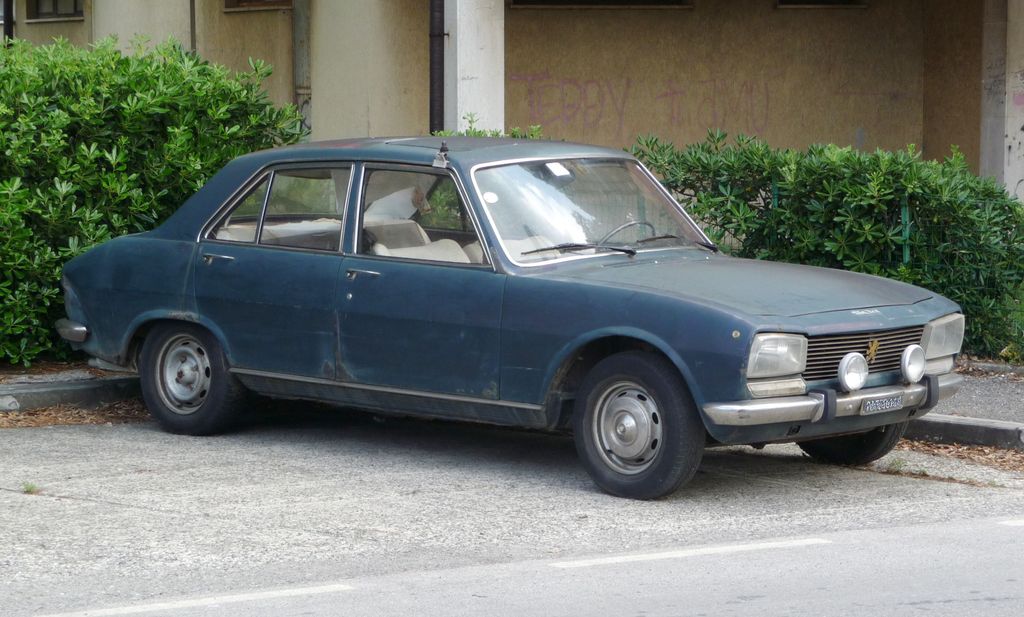
13. **Peugeot 504, Peugeot**The Peugeot 504, launched in 1968, exemplifies a different kind of automotive endurance, one built on rugged reliability and a comfortable, refined driving experience. While its production in Europe tapered off through the 1980s, its reputation for resilience allowed it to remain in production in some regions well into the 2000s, a testament to its exceptional design and engineering for challenging conditions.
The 504 was particularly renowned for its “durable suspension and build quality,” characteristics that made it an ideal vehicle for a wide variety of terrains, from smooth European motorways to less-forgiving roads found elsewhere. This inherent robustness ensured that the 504 could withstand years of demanding use, a critical factor for its prolonged success in markets where longevity was paramount.
Drivers and passengers alike praised the Peugeot 504 for its “comfortable ride and longevity.” Its well-engineered suspension system absorbed road imperfections with grace, providing a smooth and unruffled journey, even on extended trips. This combination of comfort and reliability cultivated a loyal following, cementing its reputation as a dependable workhorse and a pleasant touring car in equal measure.
Its extended production run in various global markets speaks volumes about its fundamental soundness and adaptability. The Peugeot 504 wasn’t just a car; it was a trusted companion that performed reliably under diverse circumstances, from daily commutes to arduous long-distance journeys. Its legacy is one of unwavering dependability and comfort, making it a beloved classic that stood the test of time, both on and off the showroom floor.
Read more about: The Purchase They’d Erase: 15 Cars Owners Want to Take Back
14. **Talbot Tagora, Talbot (Peugeot)**Our final entry in this retrospective journey brings us to the Talbot Tagora, an executive sedan that, despite its ambitious aspirations, experienced a remarkably brief and challenging production run from 1980 to 1983. Launched in the wake of PSA’s acquisition of Chrysler Europe, the Tagora was intended to be a flagship model, showcasing the new conglomerate’s engineering prowess and competing in the fiercely competitive luxury sedan segment.
The Tagora certainly boasted “solid engineering” underneath its contemporary, angular styling. It was designed to offer refinement and a comfortable ride, equipped with capable engines and a sophisticated chassis. The ambition was clear: to create a credible contender against established German and French executive offerings, leveraging the combined resources of the newly formed automotive entity.
However, despite its promising technical foundations, the Talbot Tagora “sold poorly,” failing to capture the imagination of buyers or carve out a significant market share. Its conservative styling, coupled with a fiercely competitive market and a newly integrated brand identity that perhaps lacked the prestige of its rivals, meant it struggled to find its footing. The result was a stark commercial reality: “fewer than 20,000 were built” during its short existence.
The Tagora’s quiet discontinuation serves as a poignant reminder of the cutthroat nature of the automotive industry, where even solid engineering can be overshadowed by market perception, timing, and brand heritage. Today, the Talbot Tagora remains a rare sight, a curiosity for enthusiasts of obscure automotive history, and a testament to a grand plan that, unfortunately, never quite came to fruition. Yet, it still represents a moment in time, an attempt to bridge the gap between automotive giants, and a distinct piece of European car history.
Read more about: Remember When These European Legends Ruled the Roads? 15 Iconic Car Models That Defined an Era But Are Now Gone
These cars, whether they were record-breakers, rally heroes, or symbols of a nation’s recovery, embody the incredible diversity and innovation of the European automotive landscape. Their stories are a tapestry woven with threads of ambition, engineering brilliance, and cultural impact, proving that a vehicle’s importance isn’t solely defined by its continuous production. Even in their absence from current showrooms, they continue to influence design, inspire enthusiasts, and remind us of the rich, ever-evolving saga of the automobile. They are more than just metal and glass; they are chapters in an ongoing story, celebrated long after their final engines fell silent.

